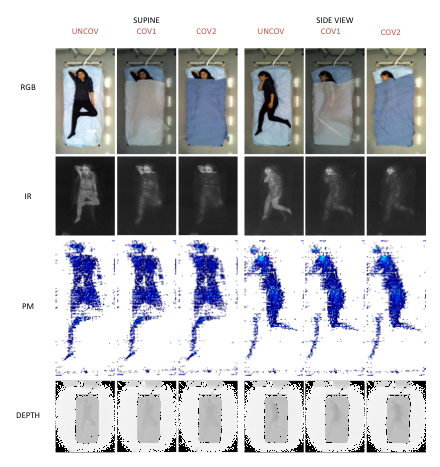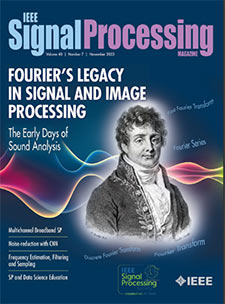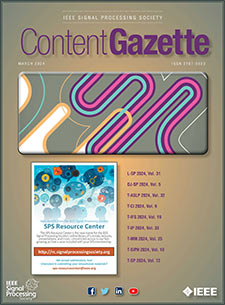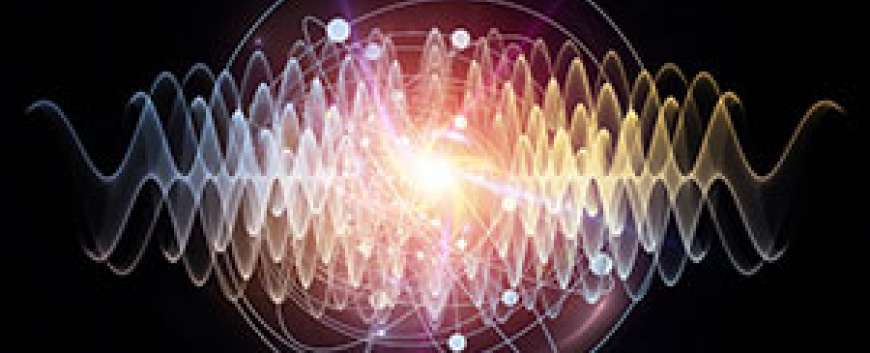- Our Story
- Publications & Resources
- Publications & Resources
- Publications
- IEEE Signal Processing Magazine
- IEEE Journal of Selected Topics in Signal Processing
- IEEE Signal Processing Letters
- IEEE/ACM Transactions on Audio Speech and Language Processing
- IEEE Transactions on Computational Imaging
- IEEE Transactions on Image Processing
- IEEE Transactions on Information Forensics and Security
- IEEE Transactions on Multimedia
- IEEE Transactions on Signal and Information Processing over Networks
- IEEE Transactions on Signal Processing
- IEEE TCI
- IEEE TSIPN
- Data & Challenges
- Submit Manuscript
- Guidelines
- Information for Authors
- Special Issue Deadlines
- Overview Articles
- Top Accessed Articles
- SPS Newsletter
- SigPort
- SPS Resource Center
- Publications Feedback
- Publications FAQ
- Blog
- News
- Dataset Papers
- Conferences & Events
- Community & Involvement
- Professional Development
- For Volunteers
- Information for Authors-OJSP
-
Home
Conferences Events IEEE JSTSP Article IEEE Signal Processing Magazine IEEE TIFS Article IEEE TMM Article IEEE TSP Article Jobs in Signal Processing Lectures Machine Learning Seasonal Schools Signal Processing News SPM Article SPS Distinguished Lectures SPS Newsletter Article SPS Webinar SPS Webinars SPS Webinar Series Webinar webinars
-
Our Story
What is Signal Processing?

The technology we use, and even rely on, in our everyday lives –computers, radios, video, cell phones – is enabled by signal processing. Learn More » -
Publications & Resources
-
SPS Resources
- Signal Processing Magazine The premier publication of the society.
- SPS Newsletter Monthly updates in Signal Processing
- SPS Resource Center Online library of tutorials, lectures, and presentations.
- SigPort Online repository for reports, papers, and more.
- SPS Feed The latest news, events, and more from the world of Signal Processing.
-
SPS Resources
-
Conferences & Events
-
Community & Involvement
-
Membership
- Join SPS The IEEE Signal Processing Magazine, Conference, Discounts, Awards, Collaborations, and more!
- Chapter Locator Find your local chapter and connect with fellow industry professionals, academics and students
- Women in Signal Processing Networking and engagement opportunities for women across signal processing disciplines
- Students Scholarships, conference discounts, travel grants, SP Cup, VIP Cup, 5-MICC
- Young Professionals Career development opportunities, networking
- Get Involved
-
Technical Committees
- Applied Signal Processing Systems
- Audio and Acoustic Signal Processing
- Bio Imaging and Signal Processing
- Computational Imaging
- Image Video and Multidimensional Signal Processing
- Information Forensics and Security
- Machine Learning for Signal Processing
- Multimedia Signal Processing
- Sensor Array and Multichannel
- Signal Processing for Communication and Networking
- Signal Processing Theory and Methods
- Speech and Language Processing
- Technical Working Groups
- More TC Resources
-
Membership
-
Professional Development
-
Professional Development
- Mentoring Experiences for Underrepresented Young Researchers (ME-UYR)
- Micro Mentoring Experience Program (MiME)
- Distinguished Lecturer Program
- Distinguished Lecturers
- Distinguished Lecturer Nominations
- Past Lecturers
- Distinguished Industry Speaker Program
- Distinguished Industry Speakers
- Distinguished Industry Speaker Nominations
- Industry Resources
- IEEE Training Materials
- Jobs in Signal Processing: IEEE Job Site
-
Career Resources
- SPS Education Program Educational content in signal processing and related fields.
- Distinguished Lecturer Program Chapters have access to educators and authors in the fields of Signal Processing
- PROGRESS Initiative Promoting diversity in the field of signal processing.
- Job Opportunities Signal Processing and Technical Committee specific job opportunities
- Job Submission Form Employers may submit opportunities in the area of Signal Processing.
-
Professional Development
-
For Volunteers
-
For Board & Committee Members
- Board Agenda/Minutes* Agendas, minutes and supporting documentation for Board and Committee Members
- SPS Directory* Directory of volunteers, society and division directory for Board and Committee Members.
- Membership Development Reports* Insight into the Society’s month-over-month and year-over-year growths and declines for Board and Committee Members
-
For Board & Committee Members
Popular Pages
Today's:
- Submit a Manuscript
- Information for Authors
- (MLSP 2024) 2024 IEEE International Workshop on Machine Learning for Signal Processing
- IEEE Transactions on Multimedia
- Signal Processing Cup
- IEEE/ACM Transactions on Audio Speech and Language Processing
- Award Recipients
- Board of Governors
- IEEE Transactions on Image Processing
- (ICASSP 2025) 2025 IEEE International Conference on Acoustics, Speech and Signal Processing
- (SLT 2024) 2024 IEEE Spoken Language Technology Workshop
- IEEE Journal of Selected Topics in Signal Processing
- IEEE Signal Processing Letters
- Conference Call for Papers
- (ACSSC 2024) 2024 Asilomar Conference on Signals, Systems, and Computers
All time:
- Information for Authors
- Submit a Manuscript
- IEEE Transactions on Image Processing
- 404 Page
- IEEE/ACM Transactions on Audio Speech and Language Processing
- IEEE Transactions on Information Forensics and Security
- IEEE Transactions on Multimedia
- IEEE Signal Processing Letters
- IEEE Transactions on Signal Processing
- Conferences & Events
- IEEE Journal of Selected Topics in Signal Processing
- Information for Authors-SPL
- Conference Call for Papers
- Signal Processing 101
- IEEE Signal Processing Magazine
Last viewed:
- IEEE Transactions on Information Forensics and Security
- IEEE Signal Processing Magazine
- IEEE SPM Special Issue on Signal Processing for the Integrated Sensing and Communications Revolution
- Submit a Manuscript
- Login Error
- Feedback
- Acoustic Echo Cancellation Challenge: Datasets and Testing Framework - ICASSP 2021
- Signal Processing Cup
- Distributed Model-Free Adaptive Predictive Control for MIMO Multi-Agent Systems With Deception Attack
- About Transactions on Image Processing
- Paging Dr. Robot: Artificial intelligence moves into care
- Video & Image Processing Cup
- About IEEE Transactions on Signal Processing
- IEEE Transactions on Signal Processing
- IEEE JSTSP Special Issue on Distributed Signal Processing for Extremely Large-Scale Antenna Array Systems
Releasing SLP Dataset: To Learn How We Have Been Sleeping
You are here
Newsletter Menu
Newsletter Categories
Top Reasons to Join SPS Today!
1. IEEE Signal Processing Magazine
2. Signal Processing Digital Library*
3. Inside Signal Processing Newsletter
4. SPS Resource Center
5. Career advancement & recognition
6. Discounts on conferences and publications
7. Professional networking
8. Communities for students, young professionals, and women
9. Volunteer opportunities
10. Coming soon! PDH/CEU credits
Click here to learn more.
News and Resources for Members of the IEEE Signal Processing Society
Releasing SLP Dataset: To Learn How We Have Been Sleeping
Releasing SLP Dataset: To Learn How We Have Been Sleeping
The positions we take in our sleep could reveal important factors related to our physical/mental well-being as well as affect the symptoms of conditions such as sleep apnea, bedsores, or even carpal tunnel syndrome. Moreover, patients are usually required to maintain specific poses after certain surgeries to get a better recovery result and during pregnancy, pregnant women are recommended to avoid certain sleeping postures that could cause harm to the fetus. Therefore, long-term monitoring and automatically detecting in-bed poses are of critical interest in healthcare. Currently, besides self-reporting by patients and visual inspection by the caregivers, in-bed pose estimation methods mainly rely on the use of pressure mapping systems, which are expensive and hard to maintain.
Our goal in this research is enabling the use of advanced computer vision techniques in order to tackle challenges faced when sleep pose monitoring is desired. Although in the last decade, computer vision has been extremely successful in employing deep learning for many visual perception tasks, its use is still hindered when it comes to practical medical applications. This shortcoming is due to the factors that are shared in the majority of the medical applications, including: (1) lack of enough sample data and the cost of data gathering and labeling, (2) patient’s privacy concerns, (3) patient’s safety and comfort consideration, and (4) accessibility and unobtrusiveness of the data collection/monitoring technologies.

Assistant Professor Sarah Ostadabbas and her team in the Augmented Cognition Laboratory (ACLab) at Northeastern University received a grant from the National Science Foundation to build a dataset of sleep positions and use it to train computer vision algorithms to accurately recognize the pose of a sleeping person in a bed. They recently shared both the dataset and their algorithms on the ACLab website, to allow other researchers to use and expand on their work. This first-ever large scale dataset on in-bed poses are called “Simultaneously-collected multimodal Lying Pose (SLP)” (is pronounced as SLEEP). The lead PhD student of this project, Shuangjun Liu has combined different sensing technologies with machine learning techniques to monitor a sleeper’s position even under a full cover and in total darkness. His work could make the sleep monitoring easier for healthcare providers and less invasive for patients.
To build the dataset, the team recruited more than 100 people from the Northeastern community to come to their lab and lie down in various sleeping positions on a hospital bed or a regular twin size bed. The researchers collected several types of data from each participant, with and without a sheet or blanket, using a sensor mat under the person to take the contact pressure readings, an overhead depth sensor, and two cameras that took RGB and infrared images. Each session took about two hours. At the end of it, we have compiled SLP dataset with more than 14,000 pose samples that are fully labeled. ACLab would also like to acknowledge PhD student XiaoFei Huang, and Ms students Zhun Deng, Zhilan Li, Cheng Li, and Zhongnan Su, who contributed significantly in the SLP data collection and labeling.
By effective monitoring human pose under darkness and blanket, our SLP dataset and its associated tools can directly be employed in several healthcare applications such as long-term sleeping behavior studies.
Open Calls
Society News
- Call for Officer Nominations: Vice President-Conferences and Vice President-Publications
- Call for Nominations for Editor-in-Chief
- 37 SPS Members Elevated to Fellow
- 151 Signal Processing Society Members Elevated to Senior Member!
- Job Opportunities in Signal Processing
- Call for Nominations: Division IX Director-Elect
- SPS Members Receive 2020 IEEE Awards
- Nominate an IEEE Fellow today!
- 2019 IEEE Signal Processing Society Awardees
Education & Resources
Chapter & DL News
Initiatives & Trends
Conference News
SPS on Twitter
- DEADLINE EXTENDED: The 2023 IEEE International Workshop on Machine Learning for Signal Processing is now accepting… https://t.co/NLH2u19a3y
- ONE MONTH OUT! We are celebrating the inaugural SPS Day on 2 June, honoring the date the Society was established in… https://t.co/V6Z3wKGK1O
- The new SPS Scholarship Program welcomes applications from students interested in pursuing signal processing educat… https://t.co/0aYPMDSWDj
- CALL FOR PAPERS: The IEEE Journal of Selected Topics in Signal Processing is now seeking submissions for a Special… https://t.co/NPCGrSjQbh
- Test your knowledge of signal processing history with our April trivia! Our 75th anniversary celebration continues:… https://t.co/4xal7voFER
Home | Sitemap | Contact | Accessibility | Nondiscrimination Policy | IEEE Ethics Reporting | IEEE Privacy Policy | Terms | Feedback
© Copyright 2024 IEEE – All rights reserved. Use of this website signifies your agreement to the IEEE Terms and Conditions.
A not-for-profit organization, IEEE is the world's largest technical professional organization dedicated to advancing technology for the benefit of humanity.







